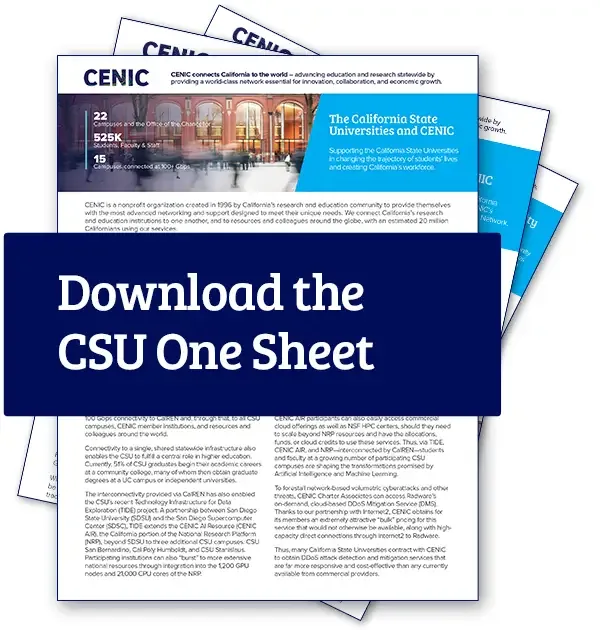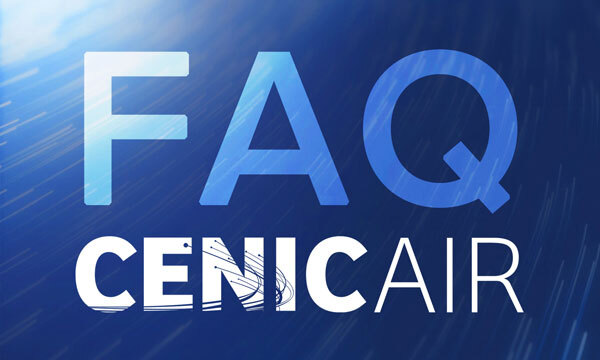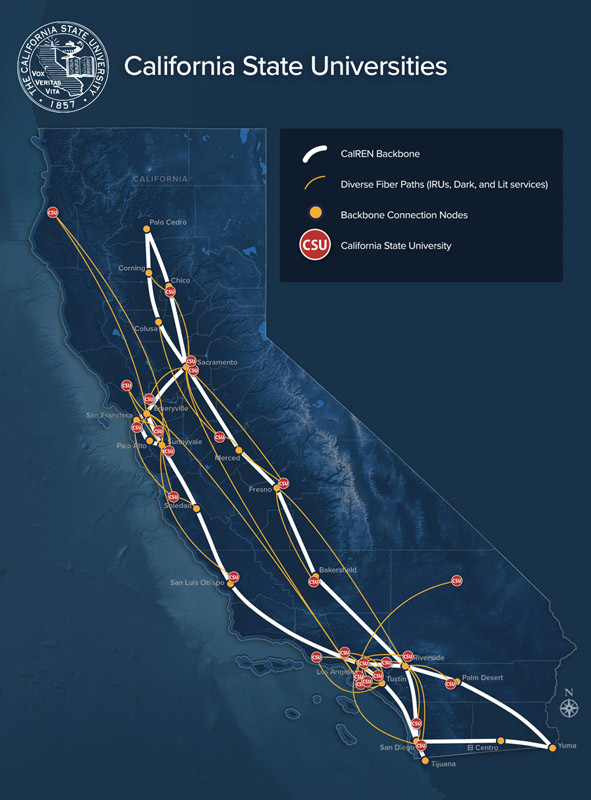- About
- Network
- Community
- Initiatives
- News
- Events
- Blog
- Publications
California State University and CENIC
CENIC helps keep CSU at the forefront of innovation
In the mid-1990s, CENIC began as a project of the state’s research and education community, with the California State Universities among its founders. That first concept—an advanced fiber-based network to serve the state’s research and education communities—has since grown into a profound partnership enabling California to create a workforce capable of changing the lives of hundreds of thousands of students each year and society itself for the better in the coming decades.
Thanks to that partnership, all 22 CSU campuses and off-campus sites enjoy future-facing networking and services via CENIC’s California Research and Education Network (CalREN), specially designed by and for the state’s research and education community. Fifteen CSU campuses have 100 Gbps connectivity to all CSU campuses, CENIC member institutions, and colleagues around the world.
The California State Universities in Action with CENIC
Connectivity to a single, shared statewide infrastructure also enables the CSU to fulfill a central role in higher education. Currently, 51% of CSU graduates begin their academic careers at a community college, and many then go on to obtain graduate degrees at another CENIC member institution.
The interconnectivity provided via CalREN has also enabled the CSU’s recent Technology Infrastructure for Data Exploration (TIDE) project. A partnership between San Diego State University (SDSU) and the San Diego Supercomputer Center (SDSC), TIDE extends the CENIC AI Resource (CENIC AIR), the California portion of the National Research Platform (NRP), beyond SDSU to three additional CSU campuses: CSU San Bernardino, Cal Poly Humboldt, and CSU Stanislaus. Participating institutions can also “burst” to more extensive national resources through integration into the 1,200 GPU nodes and 21,000 CPU cores of the NRP.
CENIC AIR has also enabled SDSU’s computing cluster for instructional use, the Visionary Education Research Network Environment (VERNE), which offers advanced graphical processing and storage made available via JupyterHub, an easy-to-use web-based environment. VERNE usage has steadily increased each semester since launching in Spring 2023, beginning with two courses, then six in Fall 2023, thirteen in Spring 2024, nineteen in Fall 2024, and fifteen in Spring 2025.
To forestall network-based volumetric cyberattacks and other threats, CENIC Charter Associates can access Radware’s on-demand, cloud-based DDoS Mitigation Service (DMS). Thanks to our partnership with Internet2, CENIC obtains for its members an extremely attractive "bulk" pricing for this service that they would not otherwise enjoy, along with high-capacity direct connections through Internet2 to Radware.
Thus, many California State Universities contract with CENIC to obtain DDoS attack detection and mitigation services that are far more responsive and cost-effective than any currently available from commercial providers.
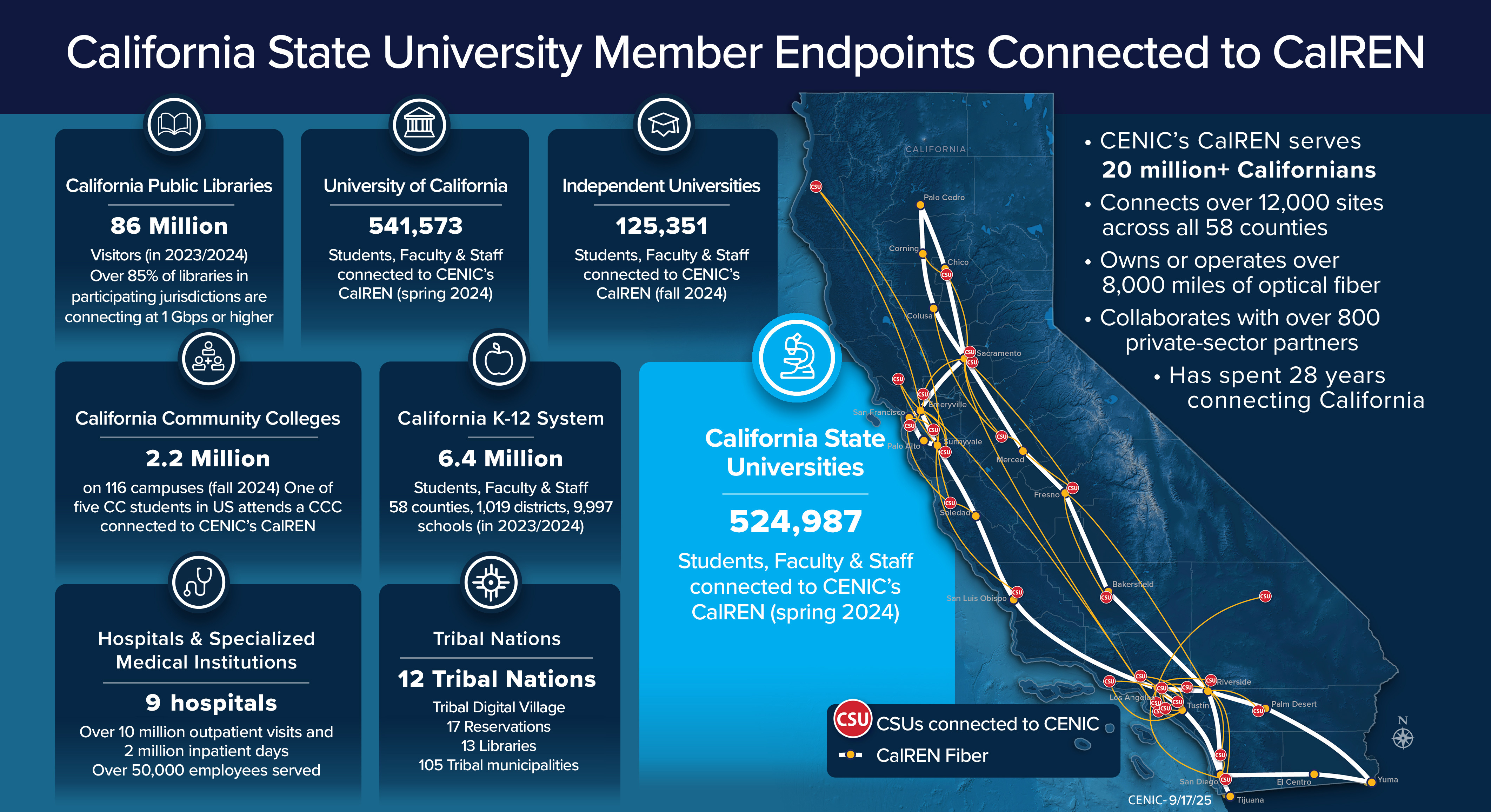
CENIC partners with national and international research and education networks, governmental networks, and commercial networks to expand access, working to support broad public access to the educational, research, and cultural assets that position California for a prosperous future.
Together from the Start
The California State University was instrumental in CENIC’s inception, and our deep partnership is even stronger today. Together, we support California’s future workforce and change the lives of hundreds of thousands of students each year.
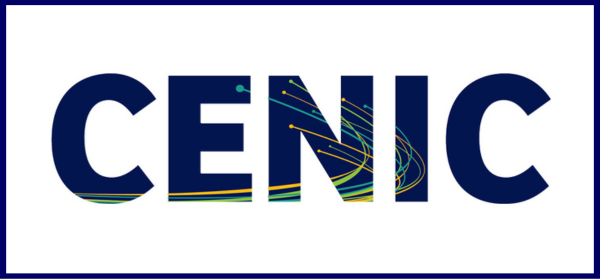
1996: CENIC is born!
Representatives from the University of California, California State University, Caltech, and the University of Southern California co-found CENIC as a nonprofit to support academic research and education needs.

1997: CENIC is funded
A consortium of CENIC institutions submitted a proposal to the National Science Foundation titled “High-Performance Connections Program” for CalREN-2—The California Research and Education Network.
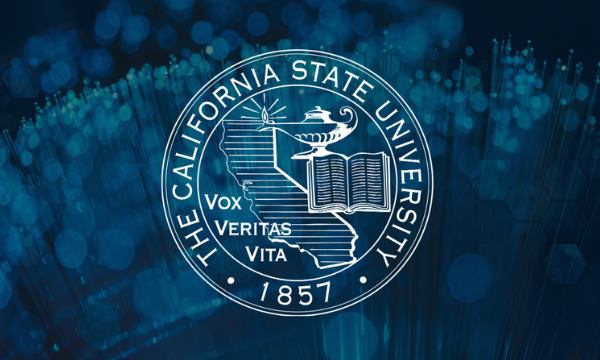
1998: CSU leaders join CENIC’s board
Gary Adams, John Charles, and Tom West represent CSU on the initial CENIC board of directors.
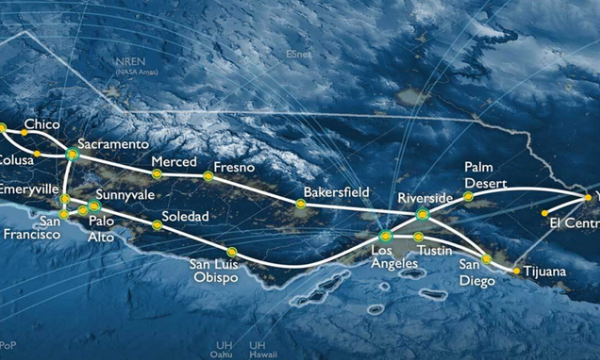
2003: CSU moves onto CENIC’s CalREN
CSU retired the 4CNet network, which served its campuses and the California Community Colleges, in favor of using the CalREN backbone and connecting to a unified R&E network.

2005: CENIC provides more speed and redundancy to CSUs
CENIC installs dual, diverse gigabit connections from the CalREN to six CSU campuses, and six other campuses receive dual connectivity.

2006: The Campus Access Infrastructure Initiative is created
CENIC provides nine CSU campuses with diverse gigabit connection upgrades.

2007: Three significant network upgrades
CSU San Bernardino receives dual, diverse connectivity; Cal Poly Pomona, a new 1 Gbps fiber connection; and CSU Stanislaus Stockton Center replaces 1.5 Mbps connections with 45 Mbps.

2011: The Central Valley Next Generation Broadband Infrastructure Project is launched
Three CSU sites directly benefit improved availability of broadband infrastructure in the Central Valley.

2017: Game changing bandwidth upgrades
Two CSU campuses now connect to CalREN at 100 Gbps. Sixteen others increase to 10 Gbps connections.
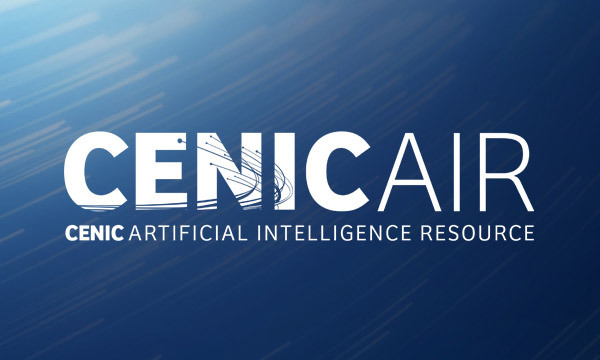
2024: The new CSU TIDE cyberinfrastructure is interconnected and accessed via CENIC
The Technology Infrastructure for Data Exploration (TIDE) Project extends the CENIC AI Resource (CENIC AIR).

